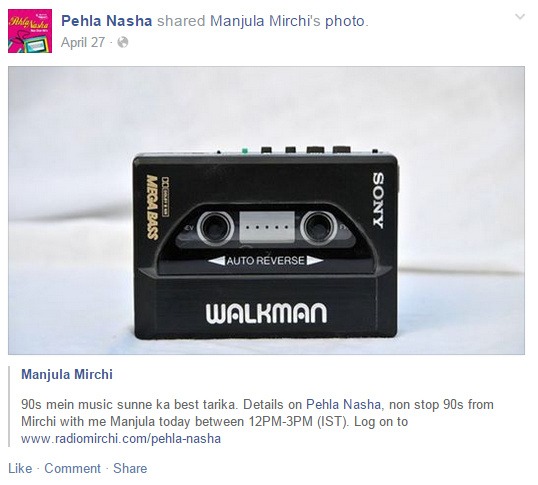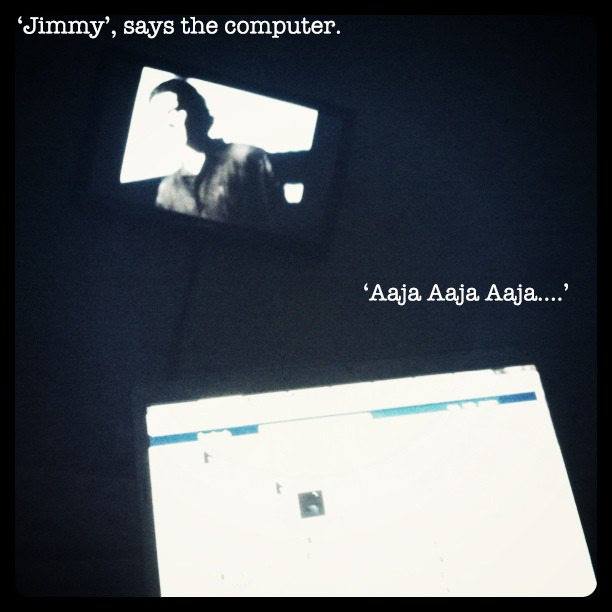Author: Sarai
-
Can Speak? Will Speak: Interpreting Digital Forensics
This is the second research note from Pallavi Paul, one of the short-term social media research fellows at The Sarai Programme. In truth the subtle web of thought Is like the weaver’s fabric wrought: One treadle moves a thousand lines, Swift darts the shuttle to and fro, Unseen the threads together flow, A thousand knots…
-
Starlets as Item Girls #OBSCENITYDEBATES
This is the second research note from Silpa Mukherjee, one of the short-term social media research fellows at The Sarai Programme. Dances have remained an integral part of our culture, life and films for all times. But for a long time one has failed to see any worthwhile dance in our films. I remember those…
-
Streaming Nostalgia: Listening to Nineties Film Music Online
This is the second research note from Abhija Ghosh, one of the short-term social media research fellows at The Sarai Programme. The reactivation of nineties Hindi cinema in public memory through several media processes, despite its reputation of being the culturally bad object, consistently critiqued for its aesthetic values, repetitive genre conventions and maudlin romantic…
-
Charting e-Territory: How Khabar Lahariya made the Digital Transition
This is the second research note from Mrinalika Roy, one of the short-term social media research fellows at The Sarai Programme. In 2014, when Khabar Lahariya bagged the Global Media Forum Award hosted by Deutsche Welle [1], it was a watershed moment for the rural newspaper that had ventured online only in 2013. It showed first-hand how internet can help an NGO reach a wider audience. “Online votes played a big part in our victory. It helped us get noticed by the judges. We were surprised by the level of support we received,” said Poorvi Bhargava, editorial coordinator for Khabar Lahariya. To say that technology has been a boon for the rural newspaper would not be unwarranted.
-
Video Workshop Report
The arrival of video ushered in a new logistics of access, circulation and production of audio-visual forms. Analog video introduced new infrastructures and legal contests for film circulation and viewing cultures, set new terms for amateur and professional practices in home videos, documentary and commercial works, pedagogical practices and civil society activism, and has been…
-
Khabar Lahariya: Rural Empowerment Goes Digital
In this post, Mrinalika Roy, one of the researchers who received the Social Media Research grant for 2015, introduces her proposed work. When a New Delhi-based NGO ‘Nirantar’ began India’s first-of-its’s-kind, rural newspaper ‘Khabar Lahariya’ in May 2002 from Bundelkhand district – a semi-arid region where 60% of the population depends on agriculture for sustenance — their aim was to bring rural women into the sphere of journalism, information and technology.
-
Imago Aevitas – Brief Introduction to the Genesis of the Project
In this post, Charu Maithani, one of the researchers who received the Social Media Research grant for 2015, introduces her proposed work. My research project combines two ideas that have captivated me for a long time – the image – its various forms and properties in a medium, and the viewers’ interaction with the image…
-
Video Forensics: Post 1
In this post, Pallavi Paul, one of the researchers who received the Social Media Research grant for 2015, introduces her proposed work. The conception of the ‘human trace’ has acquired several dimensions in the digital moment. We find ourselves surrounded not only by many kinds of images of the body but also new kinds of…
-
Lovely* Interfaces: The Many Lives of the Item Number in Social and Digital Media
In this post, Silpa Mukherjee, one of the researchers who received the Social Media Research grant for 2015, introduces her proposed work.
The item number [2] in Bombay cinema is an ensemble form navigating between the circuits of B cinema and the allure of the mainstream. As a dance form and practice, the item number has been shaped by a wide range of intersecting influences: 1990s B cinema, the fashion and modelling industry, music video culture and the 24*7 music television format introduced in globalised India. I propose to trace the life of the item number through social and digital media and the affective landscape transmitted through multiple interfaces.
-
Law’s Role in Development of the Internet
In this post, Smarika Kumar, one of the researchers who received the Social Media Research grant for 2015, introduces her proposed work. As the internet begins to pervade our lives in increasing ways, the clamour to regulate it has heightened. Be it viral posts on social media urging violence, the easy availability of sexual content…








